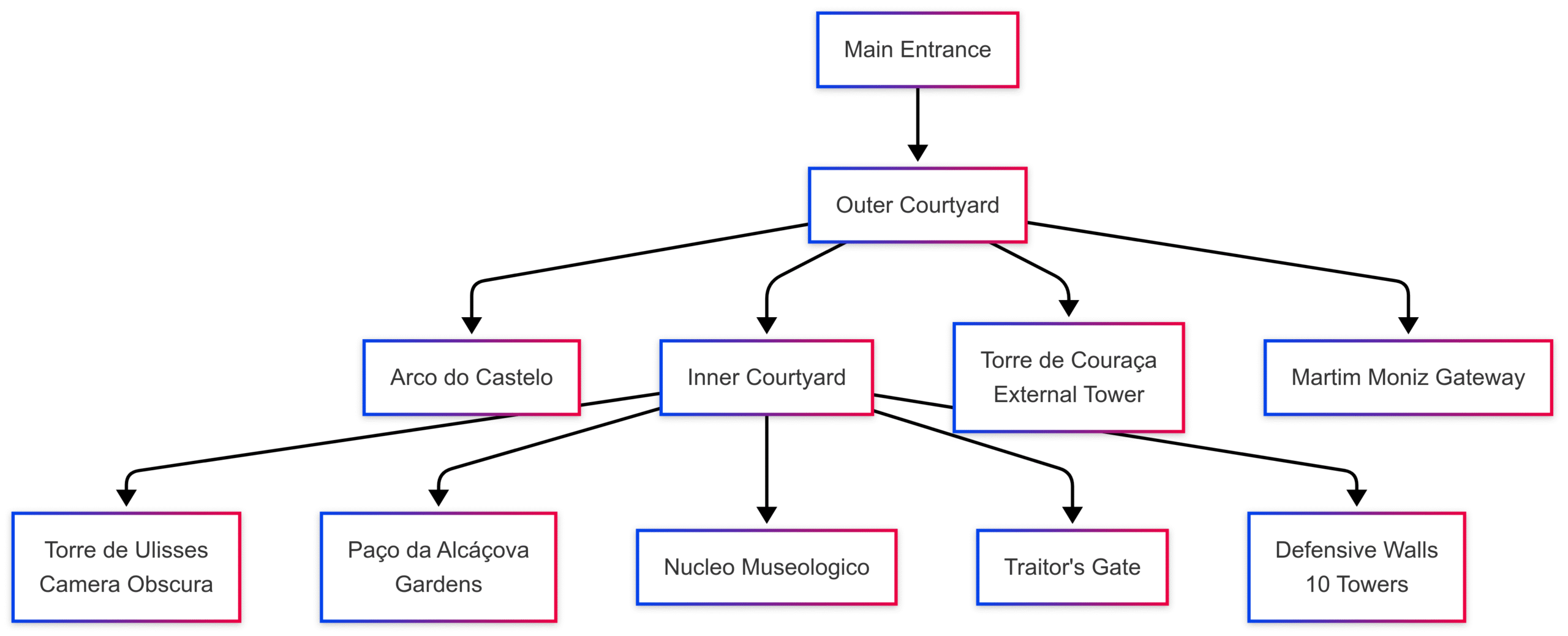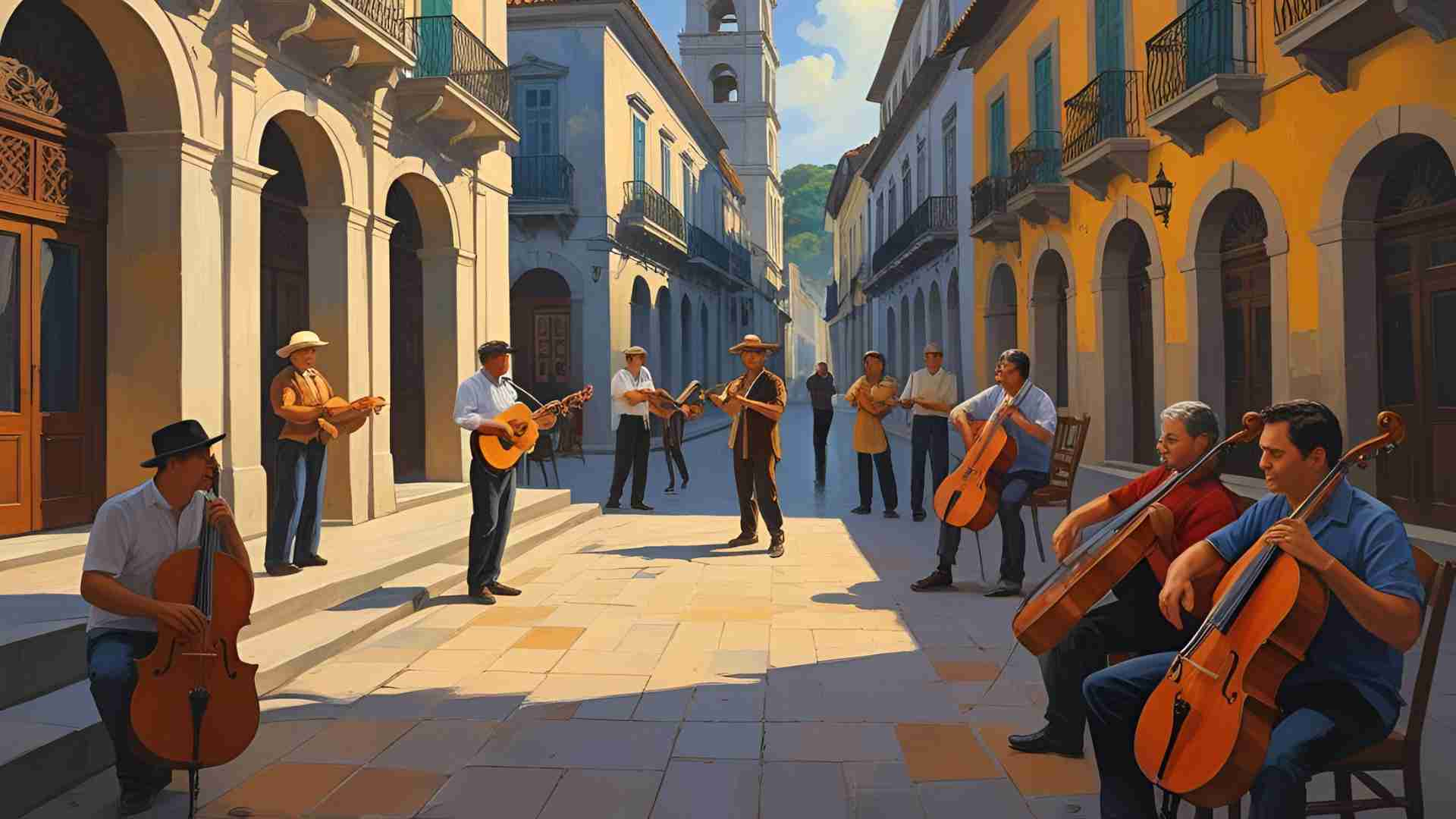Discover the charming streets around Castelo de São Jorge in Lisbon’s Alfama district, blending history, culture, and stunning views. A must-visit guide!
Nestled atop São Jorge Hill in the heart of Lisbon’s historic Alfama district, Castelo de São Jorge stands as a sentinel of the city’s rich past. While the castle itself is a magnet for tourists, the real treasure lies in the labyrinthine streets that surround it. These cobblestone alleys, steeped in history and brimming with local charm, offer an authentic glimpse into Lisbon’s soul. From vibrant flea markets to hidden viewpoints and traditional Fado music venues, exploring this area is an adventure that combines cultural immersion with breathtaking scenery. This comprehensive guide takes you through the winding streets of Alfama, offering practical tips, historical insights, and must-visit spots to make your journey unforgettable.
The Allure of Alfama’s Streets
The Alfama district, one of Lisbon’s oldest neighborhoods, is a living testament to the city’s layered history. Its narrow, hilly streets wind like a maze, connecting centuries-old churches, quaint shops, and local eateries. Unlike the polished tourist hubs, Alfama retains an authentic Portuguese vibe, where locals sell pastries from their doorsteps and the soulful strains of Fado music drift through the air. The area’s hilly terrain demands sturdy shoes, but the reward is a journey through a neighborhood that feels untouched by time.
The Castelo de São Jorge, perched at the heart of Alfama, is a focal point of this exploration. While the castle draws crowds, the surrounding streets remain a haven for those seeking a deeper connection with Lisbon’s culture. Whether you’re savoring grilled sardines at a tucked-away restaurant or stumbling upon a hidden viewpoint, Alfama’s charm lies in its surprises.
Starting Your Journey: Key Entry Points
To fully experience the streets around Castelo de São Jorge, choose one of several starting points, each offering a unique path to the castle. Below are four recommended routes, complete with step-by-step directions and highlights.
1. From Baixa District
The bustling Baixa district, with its grand Praça do Comércio, is a vibrant starting point. Begin at the waterfront square, facing the Tagus River, and head northeast along Rua da Madalena. As you reach Largo do Chão do Loureiro, ascend the stairs beside the church. Continue along Rua de Santa Cruz do Castelo until you arrive at the castle’s entrance. This route is straightforward and offers a mix of urban energy and historic charm.
Key Stops:
- Pingo Doce Elevator: Near Largo do Chão do Loureiro, take the elevator from the supermarket to skip some of the climb.
- Rua de Santa Cruz do Castelo: A picturesque street lined with colorful buildings, leading directly to the castle.
2. From Martim Moniz Square
Martim Moniz Square, a cultural hub, offers a lively starting point. From the square, locate the escalator near the Tram 28 stop. This hidden escalator provides a shortcut to higher ground. Once at the top, follow Google Maps toward the castle, climbing a set of stairs near the Vila do Castelo building (unrelated to the castle). Keep right along the castle wall, then stay left until you reach the entrance.
Key Stops:
- Martim Moniz Square: Enjoy the multicultural vibe and street food before starting your ascent.
- Escalator: A convenient way to bypass some of the steep climb.
3. From Alfama and Santa Luzia Viewpoint
Begin in Alfama at Rua Norberto de Araújo, climbing the stairs to the Santa Luzia Viewpoint. This romantic spot, featured in films, offers stunning views of the Tagus River and Alfama’s terracotta roofs. From here, head right along Rua da Santiago, continue to Largo dos Lóios, and turn right at the bakery to reach the castle’s entrance.
Key Stops:
- Santa Luzia Viewpoint: A must-visit for its panoramic views and charming pergola.
- Rua da Santiago: A narrow street filled with local flavor, leading to the castle.
4. From the Crossroads of Calçada da Graça, Calçada de Santo André, and Rua da Costa do Castelo
This crossroads, marked by a pink building named ALTAR, is a unique starting point where three historic streets converge. From here, take the steep street on your right, leading to the castle’s parking area. Follow the path to the ticket office, a five-minute walk away.
Key Stops:
- Calçada da Graça: Known for its steep incline and stunning city views.
- Rua da Costa do Castelo: Runs along the castle’s base, offering access to nearby attractions.
Navigating the Maze: Tips for Exploration
Alfama’s streets are notoriously labyrinthine, with map apps often proving unreliable. Embrace the adventure of getting lost, as every corner reveals something new. A general rule: if you’re heading uphill, you’re likely moving toward the castle. Comfortable shoes are essential due to the steep, cobblestone paths. For a unique experience, consider exploring on a Tuesday or Sunday to visit the Feira da Ladra flea market at Campo de Santa Clara, where you can find vintage treasures and handmade crafts.
Insider Tip: Avoid the crowded Tram 28, which is more of a tourist attraction than a practical way to explore. Walking allows you to discover hidden gems and immerse yourself in the local atmosphere.
Must-Visit Attractions Around Castelo de São Jorge
The streets around the castle are dotted with attractions that enhance your exploration. Here are some highlights:
Igreja de São Vicente de Fora
This 17th-century church, located at Alfama’s eastern end, is a great starting point. Built in 1629, it houses a museum showcasing religious artifacts. Admission to the museum costs €5, offering a glimpse into Lisbon’s ecclesiastical history.
Feira da Ladra Flea Market
Held on Tuesdays and Sundays at Campo de Santa Clara, this market is a treasure trove of vintage clothing, antiques, and local crafts. It’s a fantastic way to support local vendors and find unique souvenirs.
Portas do Sol Viewpoint
A standout spot, Portas do Sol offers sweeping views of the Tagus River and Alfama’s rooftops. Grab a Sagres or Super Bock beer at the kiosk or enjoy a cocktail at the rooftop bar. Visit at dusk for a magical experience, often accompanied by local musicians.
Local Eateries and Fado Venues
Alfama is renowned for its culinary scene. Try grilled sardines at Páteo 13, a hidden gem serving fish straight from the charcoal grill. For an authentic Fado experience, visit Santo André, where you can enjoy traditional music alongside Portuguese dishes like bacalhau or port wine.
Miradouro da Senhora do Monte
For panoramic city views, venture to this viewpoint, one of Lisbon’s highest. It’s a short walk from Alfama and offers a peaceful escape from the crowds.
Inside Castelo de São Jorge: A Historical Gem
While the surrounding streets are the heart of this adventure, the castle itself is worth exploring. Its history spans centuries, from Roman origins to Moorish fortifications and Christian conquests. The castle was a royal residence until the 16th century, survived sieges, and was restored in the 1940s to enhance its visitor appeal.
Key Features:
- Battlements and Towers: Explore the 10 towers and fortified walls, offering stunning views over the Tejo Estuary.
- Paço da Alcáçova Gardens: Shaded gardens provide a tranquil retreat, though watch out for the castle’s vocal peacocks.
- Camera Obscura in Torre de Ulisses: A periscope offers 360-degree real-time views of Lisbon.
- Nucleo Museologico: Displays artifacts and a historic drawing of pre-1755 Lisbon, showcasing the city’s evolution.
- Torre de Couraça: An exterior tower with alternative city views, accessible via a steep descent.
Admission Details:
- Adults: €15.00
- Youths (13–25): €7.50
- Seniors (65+): €12.50
- Children (under 12): Free
- Hours: March–October: 9:00 AM–9:00 PM; November–February: 9:00 AM–6:00 PM (last admission 30 minutes before closing).
The entrance fee is steep, but the variety of sights—viewpoints, battlements, and the museum—makes it worthwhile. For budget travelers, the Arco do Castelo, Saint George statue, and Santa Cruz do Castelo church are free to visit outside the castle walls.
Chart: Castle Layout

Historical Significance of Castelo de São Jorge
The castle’s history is a tapestry of conquests and transformations. Established by the Romans around 200 BC, it became a Visigoth stronghold from 480 to 714. The Moors fortified it further until 1147, when Afonso Henriques captured it during the Second Crusade, marking a pivotal moment in Portugal’s history. The castle served as the royal seat until the 16th century, when the court moved to Paço da Ribeira. Damaged by earthquakes in 1531 and 1755, it fell into disuse until the 1940s restoration under the Salazar government.
Notable historical moments include:
- 1147: Afonso Henriques’ siege, aided by Martim Moniz’s heroic sacrifice.
- 1387: King João I dedicated the castle to Saint George, honoring his English wife, Philippa of Lancaster.
- 1498: Vasco da Gama was received here after discovering the sea route to India.
The castle’s design reflects its defensive purpose, with indirect routes, dead-end courtyards, and fortified gates to thwart attackers.
Cultural Immersion in Alfama
Alfama’s streets are alive with Portuguese culture. Locals are warm and welcoming, often greeting visitors with an “Olá” and appreciating a polite “Obrigado” in return. The neighborhood is safe, and residents are happy to guide lost travelers. Unmarked shops and bars, often run from homes, offer affordable Portuguese dishes like sardinhas assadas or pastéis de nata. Fado nights at venues like Santo André provide an emotional connection to Portugal’s musical heritage.
Table: Must-Try Portuguese Dishes in Alfama
| Dish | Description | Recommended Spot |
|---|---|---|
| Sardinhas Assadas | Grilled sardines, a Portuguese staple | Páteo 13 |
| Bacalhau à Brás | Codfish with eggs and potatoes | Santo André |
| Pastéis de Nata | Custard tarts with a crispy crust | Local bakeries |
| Caldo Verde | Kale and potato soup | Small eateries |
Practical Tips for Visitors
- Best Time to Visit: Early morning or late afternoon to avoid crowds and long ticket queues.
- What to Bring: Comfortable shoes, water, and a camera for capturing viewpoints.
- Accessibility: The castle offers ramps and stairlifts, but the steep cobblestone streets can be challenging for those with mobility issues.
- Guided Tours: Join free castle tours for deeper historical insights. For a broader Lisbon experience, consider tours via platforms like GetYourGuide.
Beyond Alfama: Nearby Attractions
While Alfama is the heart of this journey, nearby attractions complement your visit:
- Praça do Comércio: A grand waterfront square in Baixa, perfect for a post-castle stroll.
- Mosteiro dos Jerónimos: A UNESCO-listed monastery in Belém, showcasing Manueline architecture.
- Oceanário de Lisboa: A world-class aquarium on Lisbon’s outskirts, ideal for families.
Conclusion
Exploring the streets around Castelo de São Jorge is more than a walk—it’s a journey through Lisbon’s history, culture, and soul. From the cobblestone alleys of Alfama to the castle’s fortified walls, every step reveals a story. Whether you’re savoring local cuisine, soaking in panoramic views, or wandering the maze-like streets, this adventure promises unforgettable moments. Lace up your shoes, embrace the climb, and let Alfama’s charm guide you to the heart of Lisbon.
Please share this Exploring the Streets Around Castelo de Sao Jorge, Lisbon with your friends and do a comment below about your feedback.
We will meet you on next article.
Until you can read, 5 Reasons Why Digital Nomad Families will LOVE Bali!
